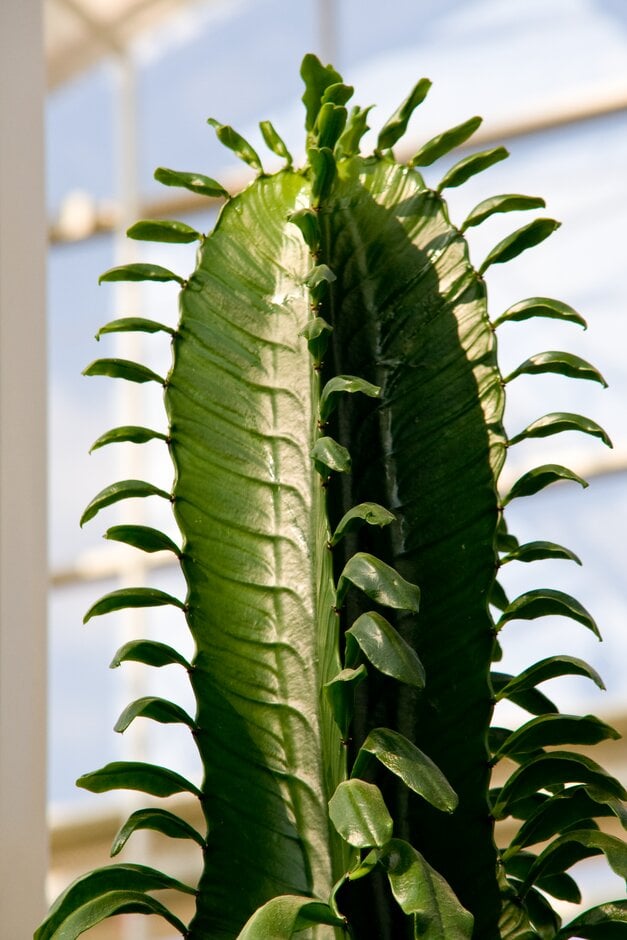Euphorbia abyssinica
Abyssinian spurge
A tree-like succulent often reaching up to 10m high in its native habitat but more commonly grown as a conservatory or houseplant in this country thus restricting its growth. Individual stems are deeply ribbed with wavy rib edges that have pairs of short spines; if kept moist in a warm growing season, small, narrow leaves may emerge from the top of the stems. Small yellowish flowers are followed by fruits that start yellowish-orange before turning a reddish colour
Size
Ultimate height
8–12 metresTime to ultimate height
10–20 yearsUltimate spread
4–8 metresGrowing conditions
Moisture
Well–drainedpH
Acid, Alkaline, NeutralColour & scent
| Stem | Flower | Foliage | Fruit | |
| Spring | Green | |||
|---|---|---|---|---|
| Summer | Yellow | Green | ||
| Autumn | Green | Orange Yellow Red | ||
| Winter | Green |
Position
- Full sun
Aspect
South–facing or West–facing
Exposure
ShelteredDrought resistance
Yes Hardiness
H2Botanical details
- Family
- Euphorbiaceae
- Native to GB / Ireland
- No
- Foliage
- Evergreen
- Habit
- Columnar upright
- Potentially harmful
- Humans/Pets: IRRITANT to skin/eye, harmful if eaten. Wear gloves and other protective equipment when handling. For further information and contact numbers regarding pets, see the HTA guide to potentially harmful plants
- Genus
Euphorbia can be annuals, perennials, shrubs or succulents, with milky sap and small flowers held within cupped, often colourful bracts
- Name status
Correct
- Plant range
- NE Africa
How to grow
Cultivation
Grow indoors in equal quantities of peat-free, loam-based potting compost and grit in full light. Water moderately when in growth and keep dry in winter. In the growing season feed a low nitrogen liquid fertiliser 2 or 3 times. See houseplant cacti and succulent cultivation for more details.
Propagation
Propagate by seed sown at 15-18°C in early spring or stem cuttings in spring or early summer
Suggested planting locations and garden types
- Architectural
- Houseplants
- Patio and container plants
- Conservatory and greenhouse
Pruning
No pruning required but can be cut back to restrict size
Pests
May be susceptible to mealybugs, glasshouse whitefly and glasshouse red spider mite
Diseases
May be susceptible to powdery mildews and root rots
Get involved
The Royal Horticultural Society is the UK’s leading gardening charity. We aim to enrich everyone’s life through plants, and make the UK a greener and more beautiful place.
